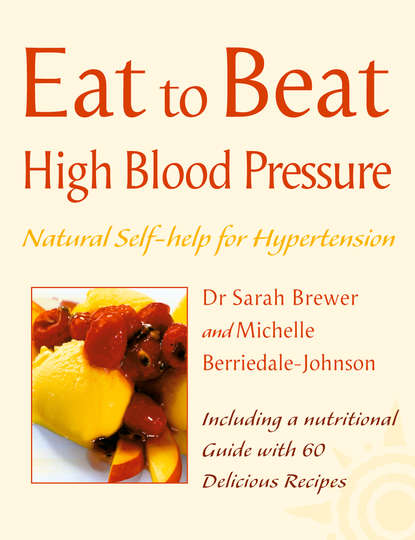По всем вопросам обращайтесь на: info@litportal.ru
(©) 2003-2024.
✖
High Blood Pressure: Natural Self-help for Hypertension, including 60 recipes
Год написания книги
2019
Настройки чтения
Размер шрифта
Высота строк
Поля
Fats from your food are processed in the small intestines to form fatty globules (chylomicrons) bound to carrier proteins, which together form substances known as lipoproteins. After a fatty meal, there may be so many of these fatty particles in the circulation that blood takes on a milky-white appearance. These fatty globules are cleared from your bloodstream by the action of an enzyme (lipoprotein lipase) found in the walls of blood capillaries. Some of the fat released in this way is taken up into cells, while some remains in the circulation and is transported to the liver. In the liver, the fats are processed, packaged to different types of carrier proteins and passed out into the circulation again for further distribution around your body.
There are two main types of circulating cholesterol:
low-density lipoprotein (LDL) cholesterol, which is linked with hardening and furring up of artery walls, high blood pressure and coronary heart disease
high-density lipoprotein (HDL) cholesterol, which protects against atherosclerosis and CHD by transporting LDL-cholesterol away from the arteries for metabolism.
Research shows that for every 1 per cent rise in beneficial HDL cholesterol, there is a corresponding fall in the risk of CHD of as much as 2 per cent. This seems to be due to reversed cholesterol transport in which HDL moves LDL cholesterol away from the tissues and back towards the liver.
It is, therefore, not so much your total blood cholesterol level that is important when it comes to atherosclerosis but the ratio between beneficial HDL cholesterol and harmful LDL cholesterol. If you are told you have a raised blood cholesterol level, it is important to know whether your LDL or HDL cholesterol is high:
if your blood fats consist mainly of HDL-cholesterol, your risk of CHD is significantly reduced
if most of the lipids are in the form of LDL-cholesterol, with low HDL levels, your risk of CHD is significantly increased. Ideally, total cholesterol level should be less than 5mmol/l, with LDL cholesterol less than 3mmol/l.
Where LDL cholesterol levels are raised, it is estimated that reducing the average total blood cholesterol level by 10 per cent could prevent over a quarter of all deaths due to coronary heart disease. Unfortunately, attempts to reduce dietary cholesterol for improved cardiovascular health often have the opposite effect. Rather than just lowering the potentially harmful LDL form of cholesterol, dietary interventions often reduce levels of beneficial HDL-cholesterol as well. This is because the types of fat in your diet are also important, and people often cut out the good fats as well as the less desirable ones. If you ate all your fat in the form of essential fatty acids, monounsaturated fats (e.g. olive oil) and fish oils, for example, your risk of CHD would be low as most circulating fats would be in the form of beneficial HDL-cholesterol.
Вы ознакомились с фрагментом книги.
Приобретайте полный текст книги у нашего партнера:
Приобретайте полный текст книги у нашего партнера:





